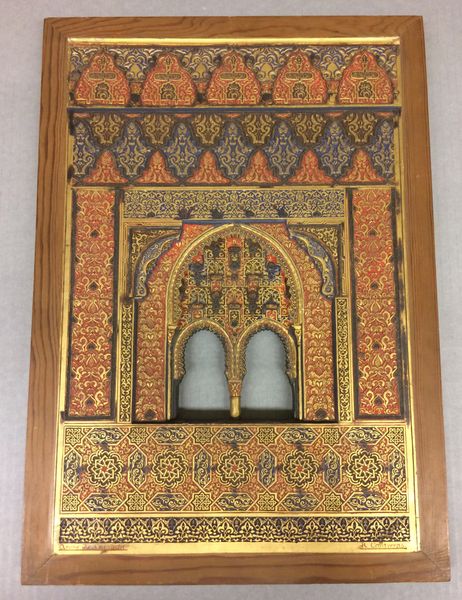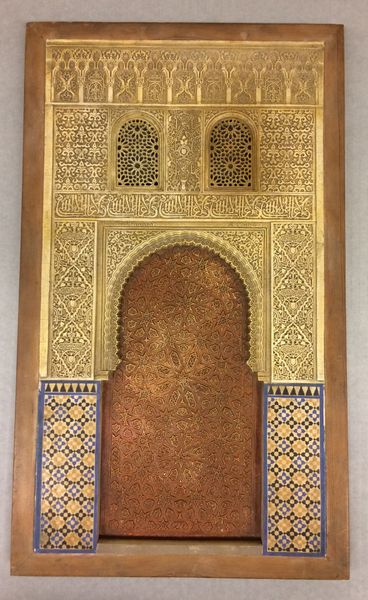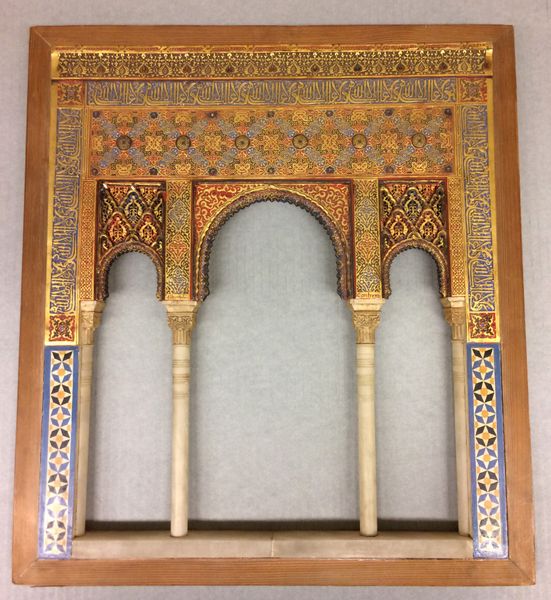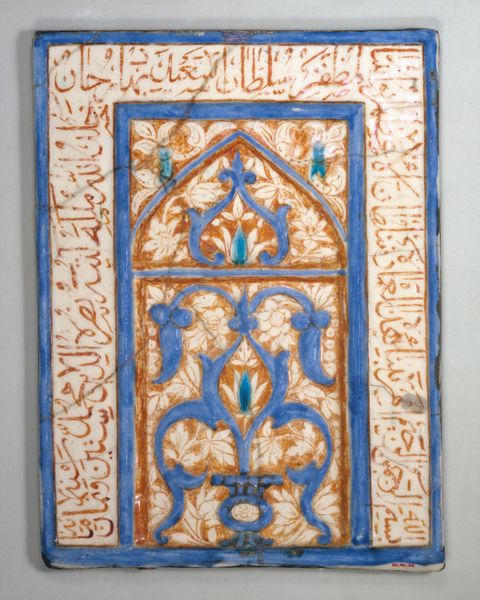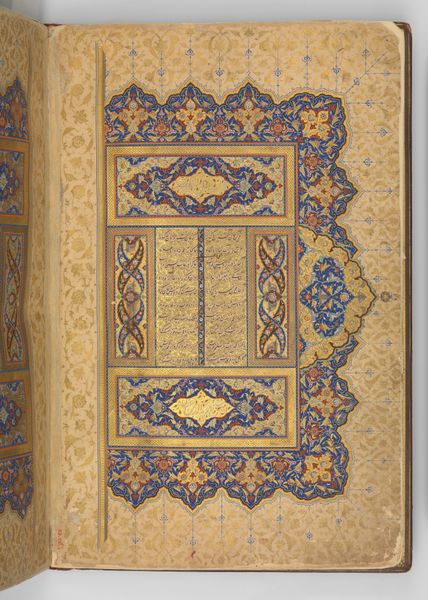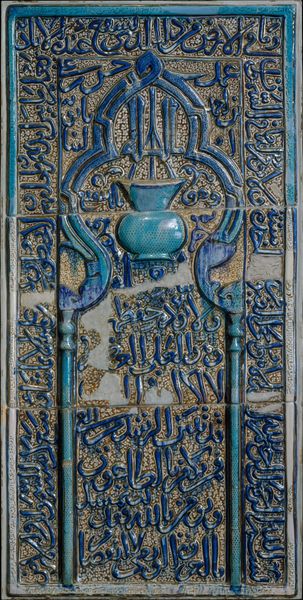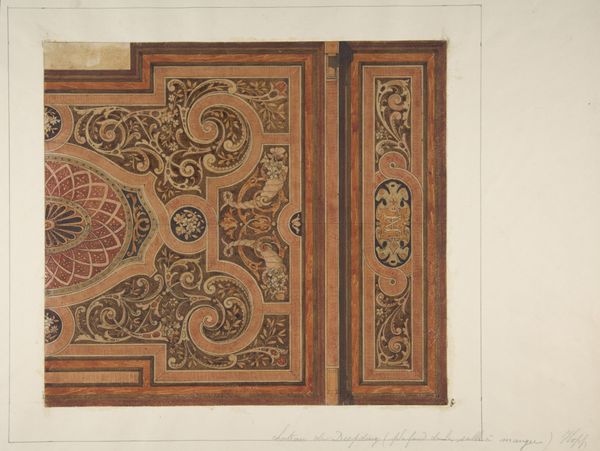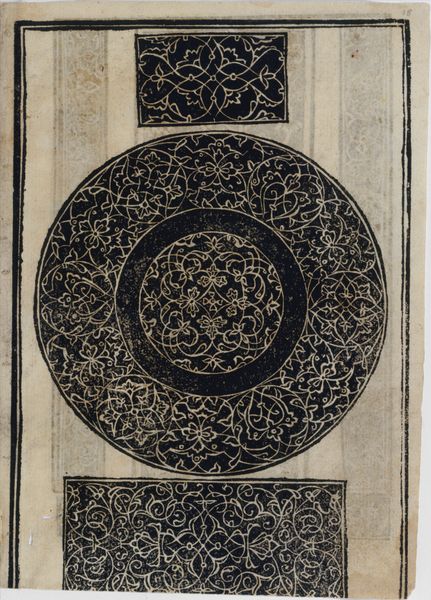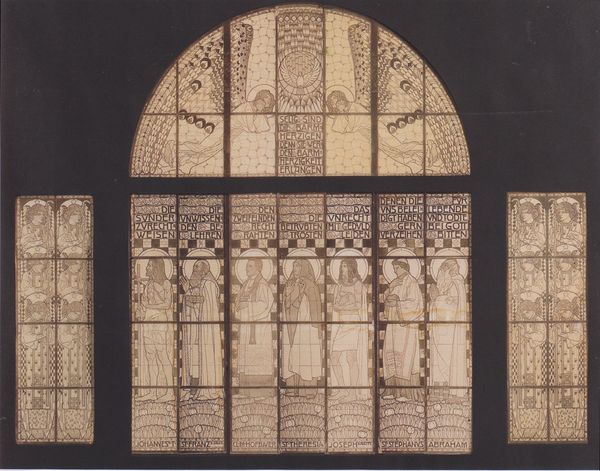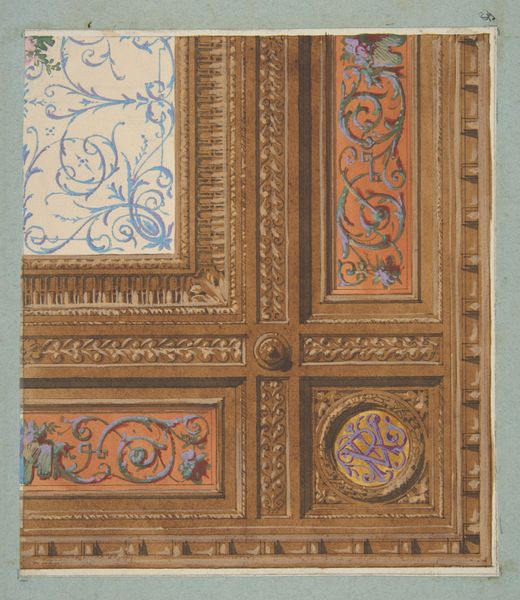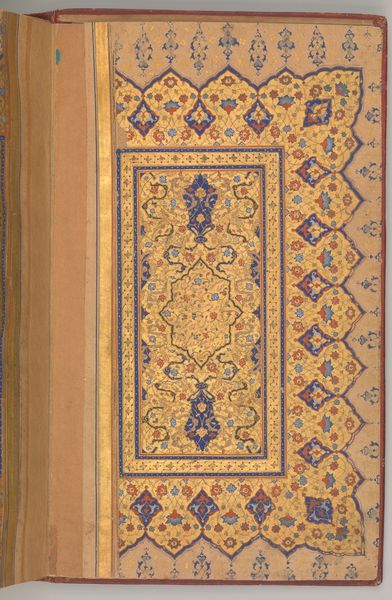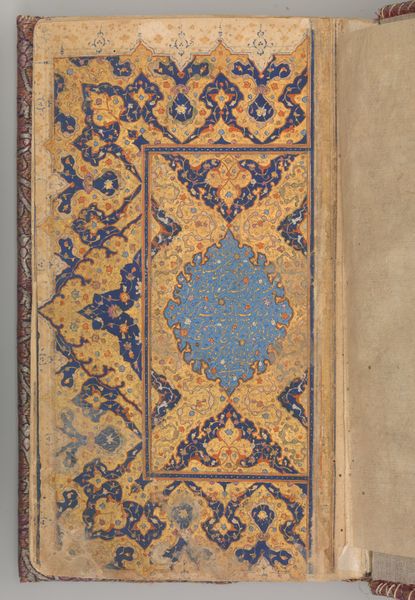
Architectural Model Based on the Alhambra 19th century
0:00
0:00
mixed-media, tempera, print, architecture
#
mixed-media
#
tempera
# print
#
historic architecture
#
islamic-art
#
architecture
Dimensions: H. 16 1/2 in. (41.9 cm) W. 11 5/8 in. (29.5 cm) D. 1 1/8 in. (2.9 cm)
Copyright: Public Domain
Curator: This ornate mixed-media construction, titled "Architectural Model Based on the Alhambra," was crafted in the 19th century. Rafael Contreras is credited as the artist. It incorporates print and tempera elements, reflecting the enduring allure of Islamic art. What strikes you about it? Editor: Immediately, the intense pattern and rich coloring transport me. The interplay of blues, reds and golds suggests opulence, a depth of cultural significance. And that central void, almost like a beckoning doorway...intriguing. Curator: The Alhambra, a palace-city in Granada, Spain, represents a fascinating intersection of cultures. Contreras, as an artist in 19th century Spain, was participating in a larger movement of reviving and reinterpreting Islamic art and architecture after centuries of Christian dominance. What does this architectural model signify within that historical context? Editor: The arch, that doorway form you pointed out, speaks volumes. Throughout different cultures, and certainly evident in Islamic architectural vocabulary, the archway implies passage, but also protection. Looking closer at the inscribed bands in the borders surrounding that form, I see them functioning like powerful protective talismans or inscribed suras from the Qur'an. Curator: Indeed. This model reflects the European fascination with the "Orient" during this period, an idealized vision of Islamic culture that sometimes overshadowed the complexities of its history. How does Contreras' interpretation differ from, say, more direct architectural renderings of the Alhambra? Editor: Well, this feels less like a straightforward documentation, more like an emotive echo of it. He distills it down to these potent symbolic elements that resonated so strongly, perhaps emphasizing pattern as spiritual, rather than merely decorative. The deliberate absence within that arch, it might suggest spiritual emptiness of post-reconquista Iberia and what was lost from cultural removal of islamic symbolism within its Peninsula. Curator: It’s fascinating how an artwork created during a specific historical period reflects contemporary political and social attitudes toward other cultures. In Contreras’ work, we observe how artistic interpretations of Islamic monuments became part of European cultural identity. Editor: Ultimately, Contreras uses recognizable historical motifs but imbued them with an interpretive and sentimental meaning of longing. That combination truly makes it timeless, doesn't it?
Comments
No comments
Be the first to comment and join the conversation on the ultimate creative platform.
